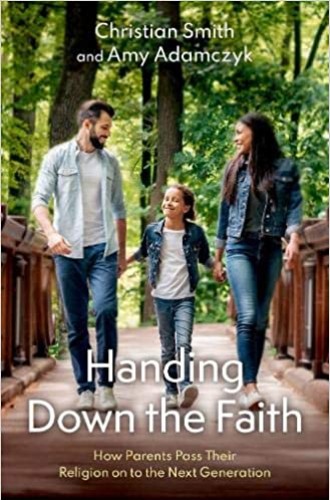How do parents pass along their faith to children?
Christian Smith and Amy Adamczyk’s sociological study offers some clues.
While religious affiliation in America continues to decline, transmission of religion from parents to children perseveres and is an area worth serious study, according to sociologists Christian Smith and Amy Adamczyk. In this book, they take a deep dive into what they say is the “single, most powerful causal influence on the religious lives of American teenagers and young adults”—not peers, not media, not clergy, but rather the religious lives of their parents.
Noting that what motivates and energizes parents has been little studied, Smith and Adamczyk offer an upbeat, eyes-wide-open assessment of what seems to work intergenerationally, based on extensive research and in-depth interviews. The book is not so much a how-to as a look at how American religious parents are handing on their religious practices and beliefs to the next generation. The authors also examine what type of parenting proves most successful in that transmission.
Smith and Adamczyk focus on the question, What do American religious parents actually assume, desire, and say they do to try to pass on religion to their children? Explaining what motivates their research, they write:






